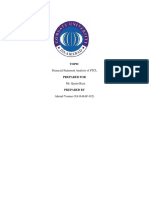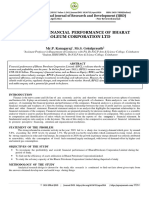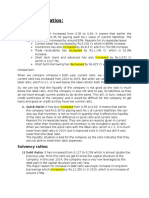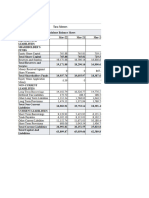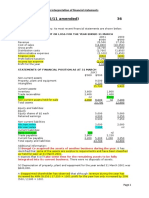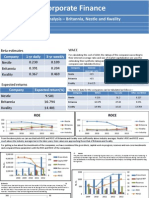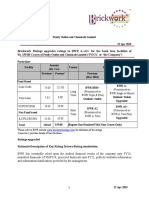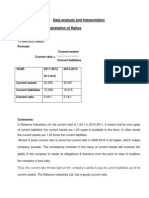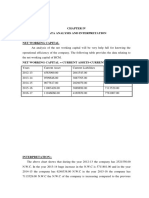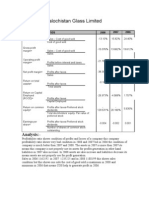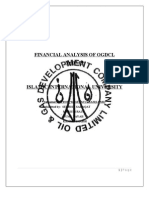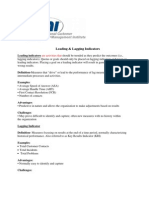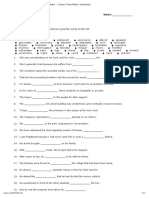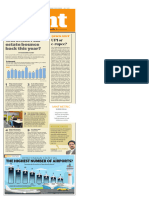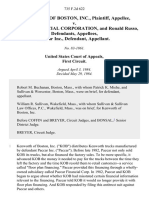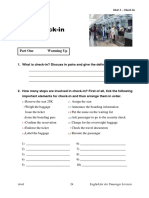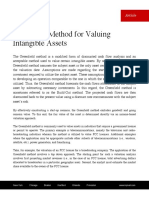0% found this document useful (0 votes)
186 views3 pagesBPCL - Financial Statement Analysis
BPCL's total equity and assets have increased from 2013-2017 due to rising reserves and current/non-current assets. Cash flow from operations has declined as liabilities and payables increased. Profitability ratios like ROCE, ROE, and EPS are up though sales to total assets is down. Liquidity ratios have declined with higher current liabilities. The debt to equity ratio is lower as the company relies less on debt. The interest coverage ratio and z-score indicate the company is financially stable and not at risk of bankruptcy.
Uploaded by
hardrocks69Copyright
© © All Rights Reserved
We take content rights seriously. If you suspect this is your content, claim it here.
Available Formats
Download as DOCX, PDF, TXT or read online on Scribd
0% found this document useful (0 votes)
186 views3 pagesBPCL - Financial Statement Analysis
BPCL's total equity and assets have increased from 2013-2017 due to rising reserves and current/non-current assets. Cash flow from operations has declined as liabilities and payables increased. Profitability ratios like ROCE, ROE, and EPS are up though sales to total assets is down. Liquidity ratios have declined with higher current liabilities. The debt to equity ratio is lower as the company relies less on debt. The interest coverage ratio and z-score indicate the company is financially stable and not at risk of bankruptcy.
Uploaded by
hardrocks69Copyright
© © All Rights Reserved
We take content rights seriously. If you suspect this is your content, claim it here.
Available Formats
Download as DOCX, PDF, TXT or read online on Scribd
/ 3


